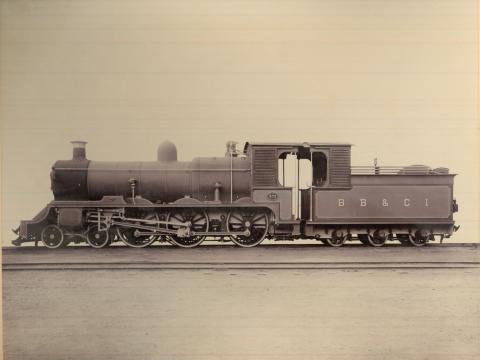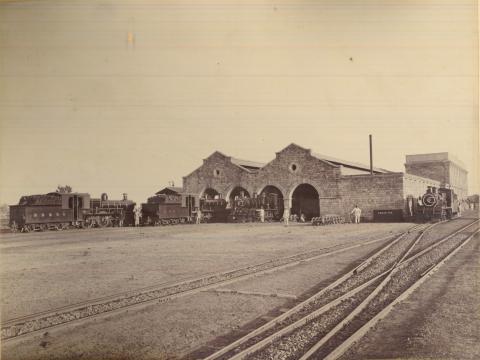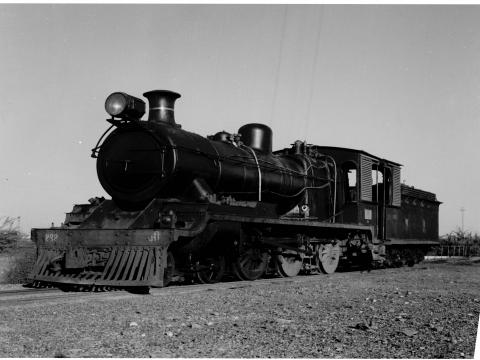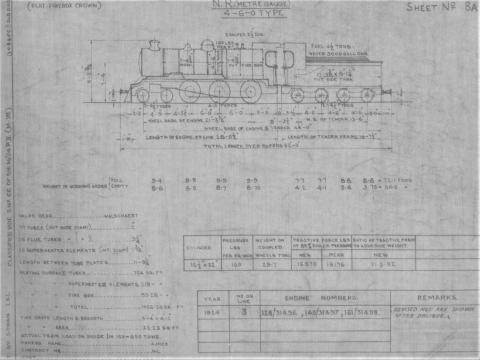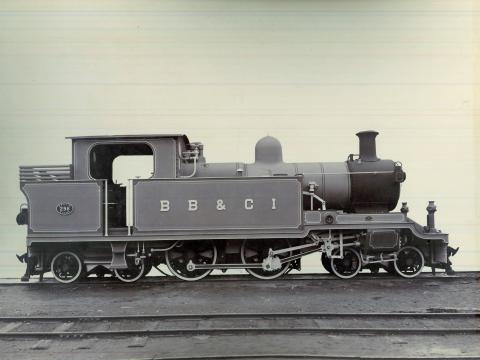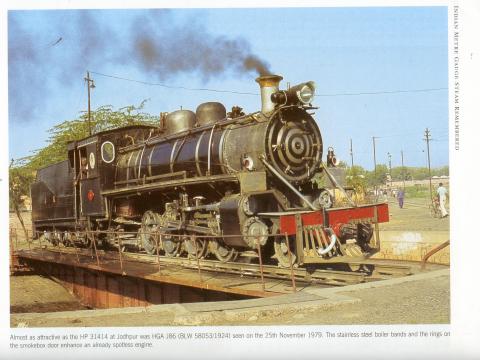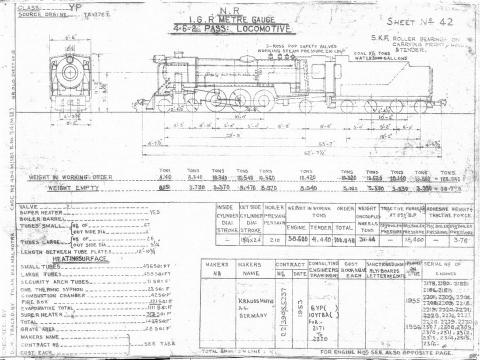The initial Classes of the early days were followed by the various BESA designs presented in 1903, developed for different types of requirements. The Passenger Locomotive was a 4-6-0 with Walschaert’s valve gear and a larger boiler than those in use at the time. There was another 4-6-0 wheel arrangement recommended for mixed traffic with some interchangeable components with the Passenger version. The BESA design was for a Freight Locomotive was a 4-8-0 wheel arrangement. They also designed a 2-6-2 Tank engine for shunting purposes. However, there was considerable variation in what was finally adopted by individual Railways although the 4-6-0 locomotive grew in popularity.
P CLASS: The ‘P’ Class was based on the BESA standard Passenger design adopted on the RMR and BB&CI with a 4-6-0 wheel arrangement and was extensively used on the Western India MG system. The locomotives were categorised with different nomenclature on various metre gauge systems
Valve Gear
Walschaerts
Cylinders (Diam X Stroke) in inches
16 ½” x 22”
Super Heater
Yes
Diameter of Coupled Wheels
57”
Total Heating Surface
975 sq ft
Boiler Pressure lb per sq in
160
Tractive Force at 85% Boiler Pressure
15215
Grate Area
15 2/3 sq ft
Maker’s Name
Ajmer Workshops
Year of Manufacture
1910 – 1923
G CLASS: These were mixed traffic locomotives based on the BESA design and like the ‘P’ class had a 4-6-0 wheel arrangement. The ‘G’ classes viz ‘G’, ‘G1’ & ‘G2’ were built at Ajmer 1919 to about 1930, had 16 ½” cylinders and were all super heated. The locomotives were categorised with different nomenclature on various metre gauge systems
Valve Gear
Walschaerts
Cylinders (Diam X Stroke)
16 ½” x 22”
Super Heater
Yes
Diameter of Coupled Wheels
48”
Total Heating Surface
1056 sq ft
Boiler Pressure lb per sq in
170
Grate Area
22 ¼ sq ft
Maker’s Name
Ajmer Worksops
Year of Manufacture ‘G’, ‘G1’ & ‘G2’
1919 to 1930

